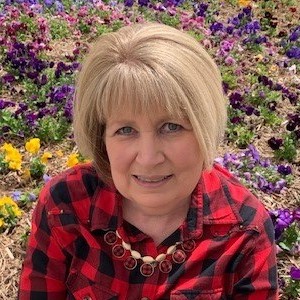Contributed by:
Kim Moore, JD, Executive Director of Workforce, Professional and Community Education, Wichita State University
Aligning Academic Outcomes with Employer Needs
Like many higher education institutions, Wichita State University is always looking for a way to improve our students' experiences and future successes. One area we've seen great success in is our badges program, a way to meet the needs of our students and our community.
Developing the Badges
After nearly eight years of innovating and developing digital credentials and badges for Wichita State University, I am constantly contacted by other universities wanting to start their own program. The best advice I can give them is not to start where I started. Instead, jump ahead to where we are now, working in partnership with all stakeholders to ensure your final product has real value in the workforce.
At WSU, we started our badging program with the idea of supporting employers by providing learners with credentials that would assist in hiring and retaining employees. The program was successful, and I was eventually introduced to 1EdTech through that work. Although we were already presenting, and in many areas, leading this type of work, there is always more to learn.
Going Deeper with Wellspring
When the Wellspring Initiative started, I had a project in mind that I knew would be a great fit. We knew that the state of Kansas had a high need for direct support professionals who work with and serve as caregivers for people with intellectual or behavioral disabilities in professional and personal settings.
Part of the problem is that this work is similar to CNAs but without any credentials, incentives, or professional development. That lack of support led to dissatisfaction, significant turnover, and a long wait for services for the people who depend on them.
We had a curriculum we were ready to use—modeled after one in Ohio—with just a few adjustments to meet the specific needs in Kansas. It created pathways not just for people already in the field but also opportunities for high school students to get the certification before they graduated.
The Wellspring Initiative helped us take the program to a new level by bringing in more thought partners, employers, and human resource professionals. This was the first time in my years working with digital credentials that we had such an introspective team that brought so many different points of view.
The Biggest Surprise
One of the final steps was to bring in not just employers but the HR professionals involved in hiring these positions to ensure our skills and competencies aligned with what they were looking for in a new hire. It was this step that brought one of the biggest surprises.
Although we had looked at job descriptions and compared our curriculum to the skills required in the postings, we learned that they still didn't match what the hiring managers were looking for. In fact, even the HR professionals were surprised to realize that they weren't asking for what they wanted.
The Wellspring Initiative helped us begin work on systemic changes to meet the needs of our community, and the improvements it promises are only starting to be realized.
The Future
This broader perspective and collaboration gave our digital credentials real value because they are truly matched with the needs of the industry.
Working through these partnerships and being able to prove the value of our credentials opened even more possibilities and opportunities for our student's success:
-
After launching the first two of eight badges in our direct support professionals series, one of our partners started a registered apprenticeship program to provide our students with the applied learning needed for the last six badges. At the same time, we were able to provide the academic credit the employers needed to receive federal aid for the project.
-
The state is also offering higher reimbursement rates for providers to increase this type of professional development and offer higher wages for direct support professionals.
-
After looking at the skills earned in the first two "core" badges, employers in the eldercare industry want to work with us on building a second pathway from those skill sets.
-
We are working to develop the badges into a nationally recognized credential, similar to a CNA, to help address these employee shortages nationwide.
In the end, it's a win-win-win. We can improve the experience and success of our students with meaningful credentials, our partners fill vacancies that are left open for far too long, and our community gets the services it needs.
About the Author
Kimberly Moore, JD, is the Executive Director for WPCE at Wichita State University. She has 35 years of experience in developing and coordinating workforce and professional development programming. A former state government administrator and corporate lobbyist, Kim served as Associate Director of the WSU Division of Continuing Education from 1996–2014. In October 2014, she was appointed Interim Director and served in that capacity until March 2015, when she was appointed Director of WPCE. She was promoted to Executive Director in June 2021. Kimberly received her bachelor's and Juris Doctor degrees from Washburn University, Topeka, Kansas.



